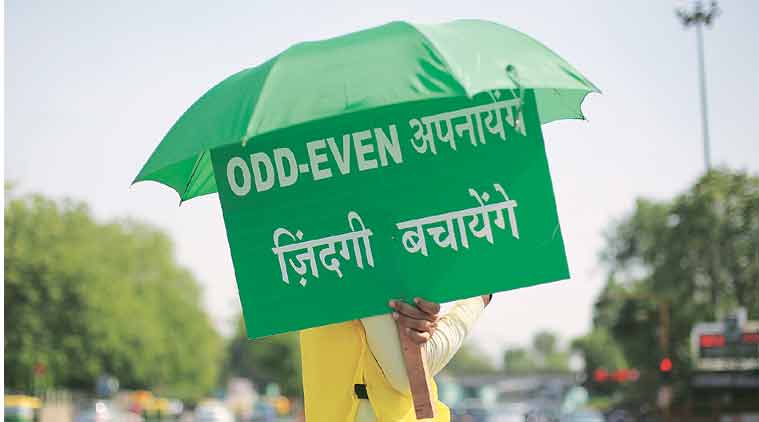Stay updated with the latest - Click here to follow us on Instagram
Delhi: Odd-even will be back in winter, says minister
Jain cited the sharp spike in pollution levels during winter months as the reason behind the decision to bring back the road rationing scheme.
 The second round of the pollution-control plan was implemented in April. (Express Photo)
The second round of the pollution-control plan was implemented in April. (Express Photo)
The Delhi government’s flagship pollution-control plan — the odd-even scheme — will be back for a third round in winter this year, Transport Minister Satyendar Jain said Tuesday.
Jain cited the sharp spike in pollution levels during winter months as the reason behind the decision to bring back the road rationing scheme.
“During monsoon, pollution levels are at their lowest levels. We are not going to implement the odd-even policy, or even observe a car-free day, right now,” he said.
[related-post]
Watch Video: What’s making news
“We will bring it back once winter sets in, because that’s when pollution levels begin rising,” said Jain, adding, “Odd-even is very much on the agenda of the government.”
The second phase of the odd-even plan — held between April 15 and April 30 — had come under considerable criticism for triggering traffic snarls across the city and “poor planning and implementation” by the city government.
The then Transport Minister Gopal Rai had formed a committee to study the impact of the second round on pollution levels as well as the hurdles the administration faced while implementing it.
Rai had said the government will go through the committee’s report as well as feedback from the public and experts on the second round of odd-even, before taking a decision on bringing back the pollution-control plan for a third time.
The report of the committee has not been made public yet.
Experts had cited differences in atmospheric conditions during summer and winter months as reasons behind a sharper decrease in pollution levels in phase one of odd-even — held in January this year — as compared to phase two of the plan. In winter, air pollutants remain trapped closer to the ground due to a phenomenon called thermal inversion. In summer months and during the monsoon, they disperse far and wide, faster.
According to data recorded by the CPCB’s Air Quality Index monitoring station at Anand Vihar, in January this year, the area witnessed five days of ‘very poor’ air quality and 25 days of ‘severe’ air quality.
Between June 12 and July 12, the area has seen two days of ‘very poor’, one day of ‘severe’ air quality, respectively, as well as 19 days of ‘moderate’ air quality, five days of ‘poor’ and three days of ‘satisfactory’ air quality. In monsoon months, pollutants get dispersed while winters see more severe air quality indices.







